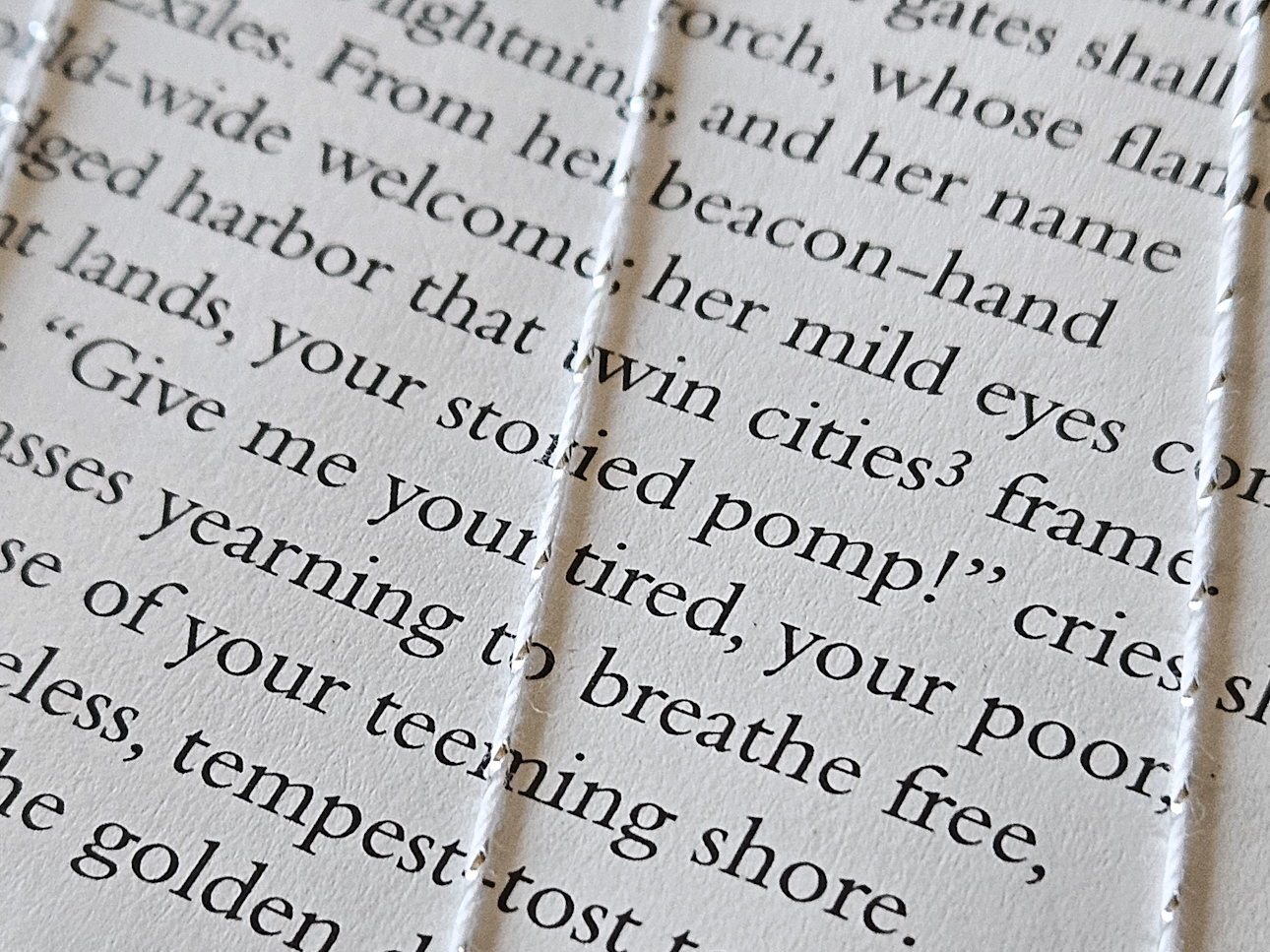We were lucky to catch up with Ellis Angel recently and have shared our conversation below.
Ellis , looking forward to hearing all of your stories today. Can you open up about a risk you’ve taken – what it was like taking that risk, why you took the risk and how it turned out?
It started back in 2017 when I was furious about the glaring corruption in Trump’s first term. I had one of those free U.S. Constitution mailers from the ACLU on my desk and started reading. It was immediately clear where the law was being violated, so I began circling the offenses in red Sharpie.
My attention was drawn to the Emoluments Clause—the section that’s supposed to prevent corruption and conflicts of interest. It says that the president cannot accept gifts, payments, or titles from foreign governments, and prohibits additional compensation from the federal government or states.
At the time, Trump was regularly holding government functions and hosting foreign dignitaries at his own properties, all while charging the Secret Service exorbitant fees to protect him at those locations. And, it wasn’t just me who saw a problem. In 2018, a federal judge ruled that a lawsuit brought by nearly 200 congressional Democrats—alleging violations of the Foreign Emoluments Clause—could proceed, citing concerns about his private business profiting from the presidency (1).
Suffice it to say, I could plainly see where Trump was breaking the law—and I was pissed.
I wanted to make something garish and gold, something entirely ostentatious like the Trump brand, to underscore the absurdity of it all. I shredded dollar bills, the thing Trump seems to value most, to visually expose the corruption. That piece became Article I, Section 9, Clause 8, a work that asks: When did money start outweighing morality in American politics?
At the time, I was thinking a lot about artists like Ai Weiwei, Kara Walker, and Banksy—people unafraid to provoke, disrupt, and confront the status quo. I was concerned about shredding money. I knew I wasn’t technically breaking the law—as long as my intent was artistic, not fraudulent—but I also knew I was stepping into the taboo. That tension became part of the message. Thankfully, there are a few artists, like Mark Wagner, who use cut up dollar bills in their work and have lived to tell the tale about it. All of these artists gave me permission and inspiration to move into the political. If they could do it, so could I.
And if money is a symbol of power, then shredding it was my way of reclaiming that power, to say something louder than a dollar ever could. The risk wasn’t just in the materials; it was in knowing that the work could be misunderstood or rejected. Not to mention that to be under the ire of the current administration means you can quickly become a target of the far right. But to me, the greater risk was doing nothing at all. Being scared into silence isn’t the answer. Action is the answer—and art is my action.
That decision to shred my first dollar set the tone for everything that followed. I create political protest weavings: artworks made by shredding texts like banned books, U.S. currency, and constitutional documents, then reweave them into something new. My work transforms various materials into visual acts of resistance.
Now I shred banned books and reweave them into protest art. Titles like The Bluest Eye and Gender Queer are being stripped from school libraries across the country. But through my weavings, they gain a second life—as a protest, as a witness, as a warning.
The real danger, I’ve found, isn’t in destruction. It’s in silence.
(1) https://www.washingtonpost.com/politics/congressional-democrats-lawsuit-alleging-trumps-private-business-is-violating-the-constitution-can-proceed-federal-judge-rules/2018/09/28/0aa3c5dc-bc22-11e8-8792-78719177250f_story.html?utm_term=.579d19812686
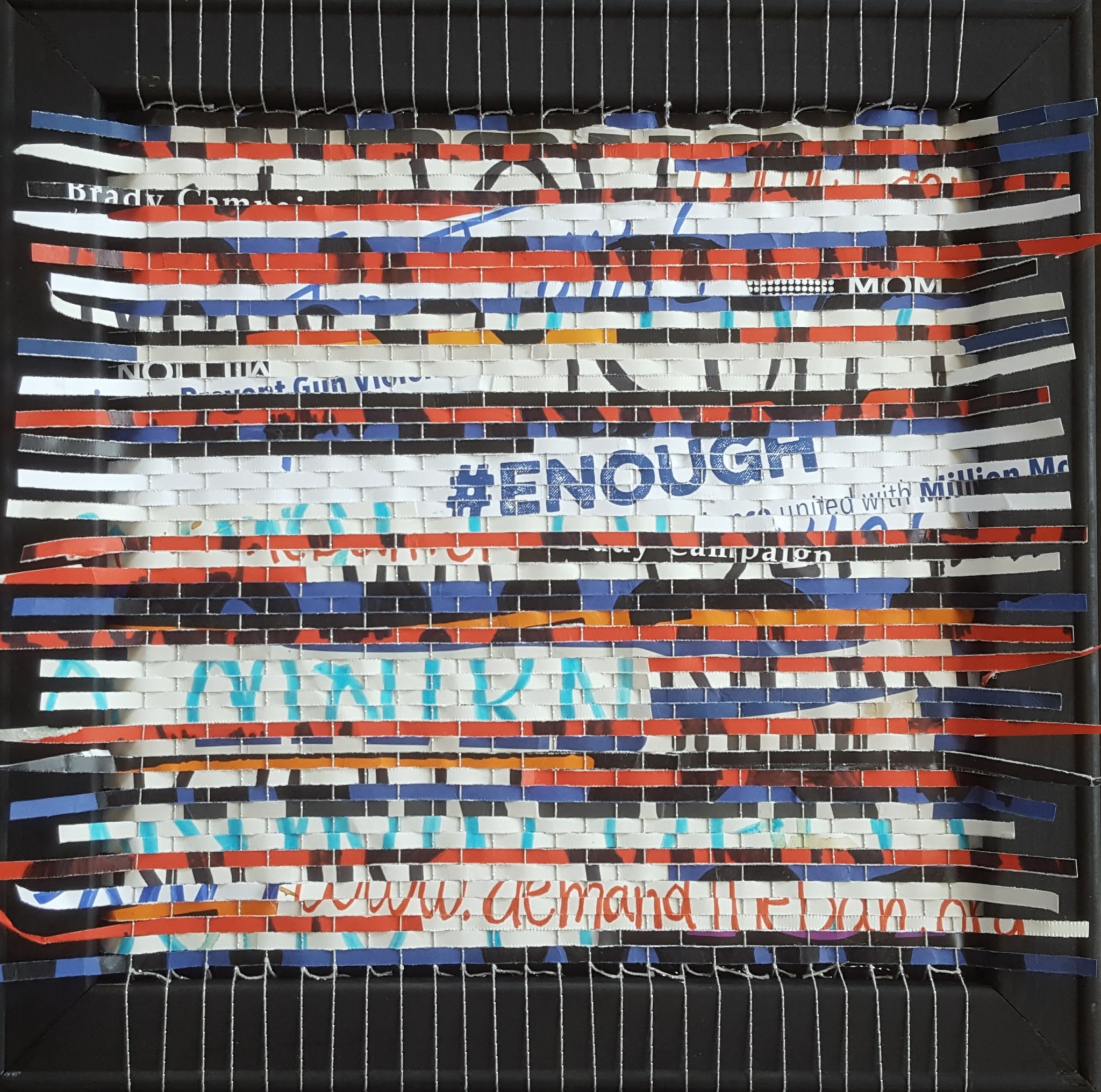
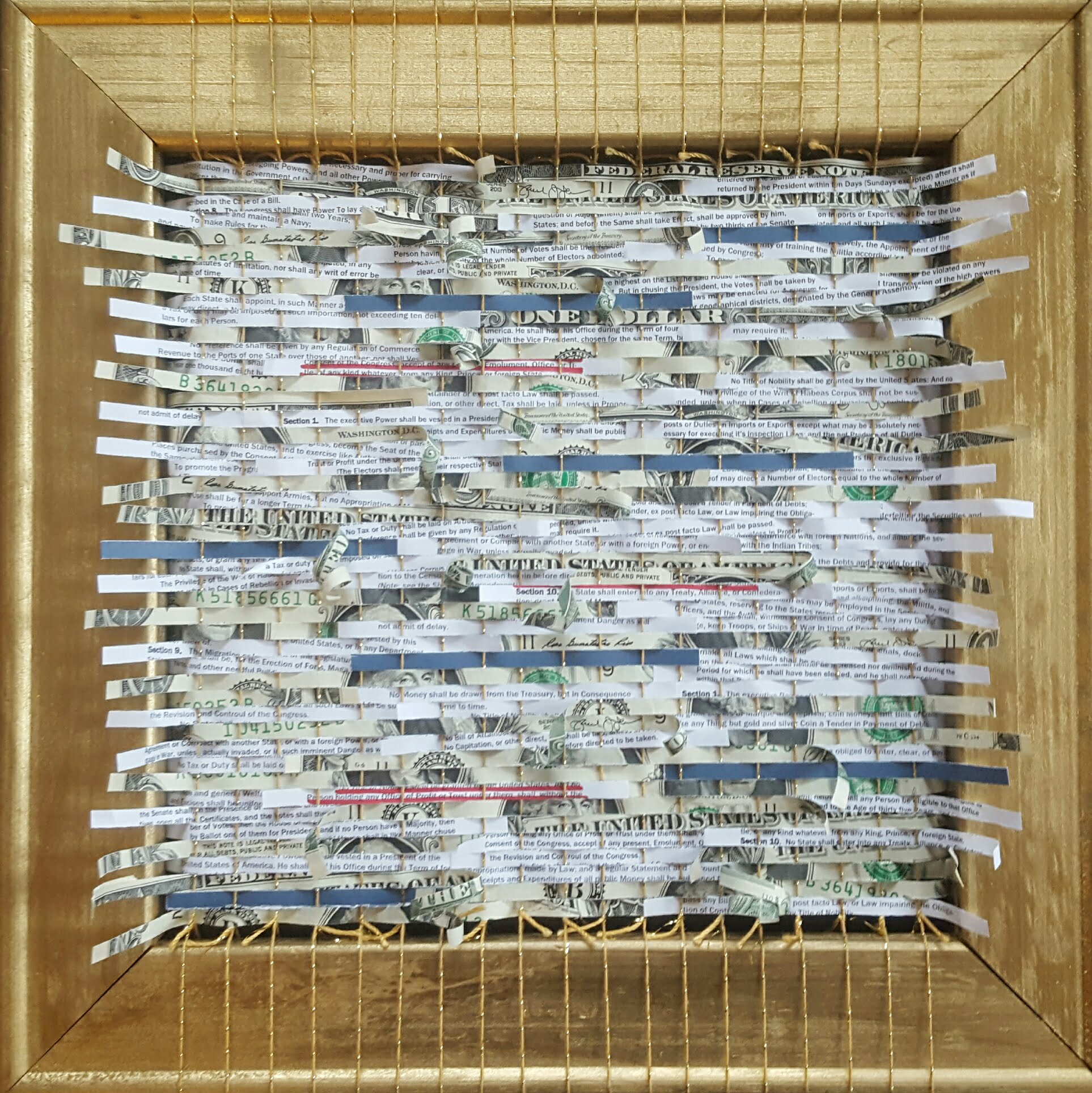
Ellis , before we move on to more of these sorts of questions, can you take some time to bring our readers up to speed on you and what you do?
I’m Ellis Angel, an activist artist weaving protest out of paper and an assortment of other things—I use everything from banned books, political protest signs, government documents, U.S. currency, to toilet paper. My work calls out censorship, corruption, and the erasure of rights.
I first shredded money and pages from the U.S. Constitution in protest of Trump-era corruption—that piece launched me into political art after I was picked up for a 2018 group exhibition in New York City called F the Art World, and I’ve been making political art ever since.
After the Women’s March in D.C. was over, the sidewalks and fences were littered with discarded protest posters that said things like, “Don’t Mourn, Organize” and “Love, Not Hate, Makes America Great.” I just couldn’t leave them. I collected what I could carry and took them home, not knowing quite what I was going to do with them. After that show, I knew what I wanted to do. I shredded them and wove them together. It became my next series: the Women’s March series.
I’ve continued to source protest signs from marches, building works like the March for Our Lives Series and Families Belong Together Series, weaving together the voices of strangers into visual statements about civil rights, immigration, gun reform, and justice with paper that otherwise would have been discarded. Now it has a new life and their messages keep going.
I’m not making functional textiles. I’m making protest art. What sets my work apart isn’t just the material—it’s the message. The goal is to reclaim space, challenge censorship, and speak out when others are being told to shut up.
Most recently, I created The Censor’s Cut: Weavings for Intellectual Freedom, a series of protest weavings made from the American Library Association’s (ALA) Top 10 Most Challenged Books list. The series premiered at Magic City Books in Tulsa, Oklahoma, in partnership with PEN America for Banned Books Week and the 2024 election. This fall, it will be on view at Fanwood Memorial Library in New Jersey, again with PEN America, in defense of the freedom to read.
I’ve just completed a new series called The Picture Book Cut: Weavings for Intellectual Freedom, made from PEN America’s Most Banned Children’s Picture Books list—including titles like In the Night Kitchen by Maurice Sendak, And Tango Makes Three by Peter Parnell, Justin Richardson and Henry Cole, Prince & Knight by Daniel Haack and Stevie Lewis, and Draw Me a Star by Eric Carle.
Book banning is not an abstract idea. These are real books being pulled off of real shelves in public schools and libraries. As PEN America reports, “PEN America has documented nearly 16,000 book bans in public schools nationwide since 2021, a number not seen since the Red Scare McCarthy era of the 1950s.” (2) It’s not just censorship—it’s erasure. And it’s happening everywhere—from rural towns to our most prominent military institutions. Pete Hegseth—I can’t believe I have to say this—the current U.S. Secretary of Defense, has ordered the removal of numerous books, with a particular focus on titles addressing DEI and LGBTQ+ themes, from military libraries. (3)
And I say: fuck that. My weavings push back and fight for the freedom to read.
This work is personal, political, and collective. I gather materials from people across the country. I give voice to the silenced. I weave protest from the pieces left behind. I want my work to make you feel something—anger, grief, urgency—because feeling something is the first step toward doing something. And doing something is the only way this changes. I’m proud of that.
If you’d like to join me, please contact your representatives: https://www.usa.gov/elected-officials
And you can learn more about how to fight book bans in your community here: pen.org/book-bans/book-ban-resources
(2) https://pen.org/banned-books-list-2025/
(3) https://www.nytimes.com/2025/04/04/us/politics/naval-academy-dei-books-removed.html


What do you think is the goal or mission that drives your creative journey?
At the heart of it, my mission is to fight back and build something better. We may not be the superheroes we dreamed of as kids, but I believe we can each leave the world better than we found it.
Whether it’s protecting the freedom to read, demanding clean air and water, or fighting to preserve civil rights—we all have a role. My role is art.
I shred banned books, hate group maps, protest signs, and legal texts to carry those voices forward—whether silenced, shouted, or forgotten. I weave them together to draw the line from past to present, and offer new life to messages that still demand to be heard.
When I shred texts and documents, it’s both a statement and a call for change. I find myself often returning to the same question: What is America?
My work is protest, stitched into the now. Because this country—this democracy—is an experiment. None of it is guaranteed. But I have to stay hopeful. If we don’t tell the truth, if we don’t resist—who will?
My goal is to use art as a tool for resistance. To show that even in a world that feels like it’s unraveling, we can still pick up the threads—and weave something anew.

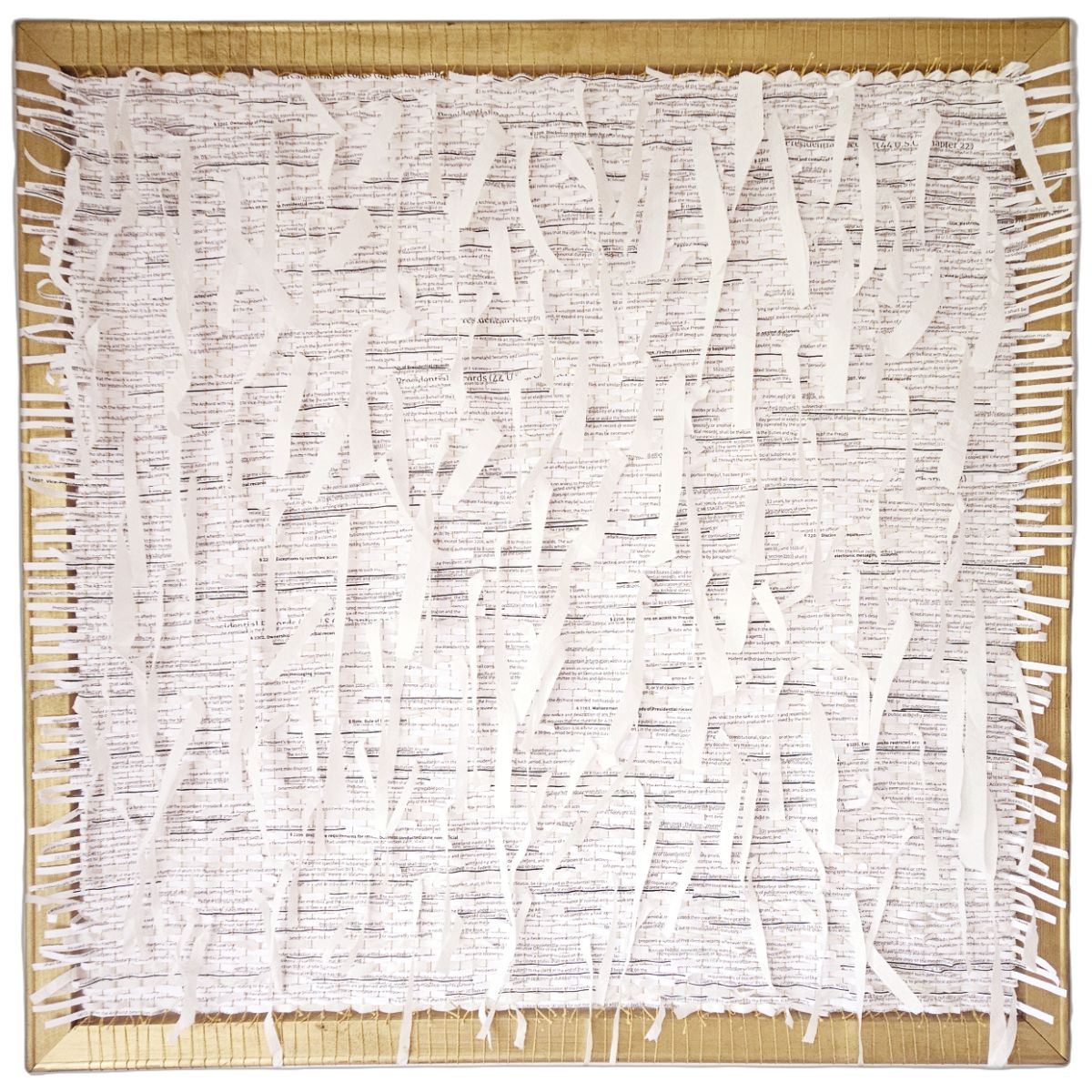
Are there any books, videos or other content that you feel have meaningfully impacted your thinking?
Absolutely, I think it’s important to not just talk about the work but to also open the door for others who might be searching for their voice, inspiration, or how to take action. These are some resources that have helped me on my journey. I hope these might inspire others too:
Speeches
I come back to these speeches every year. They always get me ready to work:
• Neil Gaiman’s “Make Good Art” – A call to make good art, “on the good days and the bad.”
• David Foster Wallace’s “This Is Water” – A powerful reminder to pay attention and be aware.
• Oliver Jeffers “Creative Luminary Illustrator Oliver Jeffers” – 15 Tips…(#15 might be my favorite.)
Books
• Art Money Success by Maria Brophy – Practical guide for working artists.
• Influence: The Psychology of Persuasion by Robert B. Cialdini – I love this book. How we talk matters.
• The Business of Being a Writer by Jane Friedman – A great resource on both business and writing.
• Leaves of Grass by Walt Whitman – How to live a life democratic.
• On Writing by Stephen King – I read this about once a year, it’s a great masterclass on writing.
Free Learning Platforms
I can’t advocate being a lifelong learner enough. I love these free resources:
• Coursera – Free university courses in art, politics, writing, and more https://www.coursera.org/
• Khan Academy – Great lessons on everything. Check out the art history section https://www.khanacademy.org/
• LinkedIn Learning – Often free with your library card (check your local library!) https://www.linkedin.com/learning/
• Libby & Hoopla – Apps that let you borrow audiobooks, documentaries, and eBooks for free from your public library https://libbyapp.com/interview/welcome#doYouHaveACard https://www.hoopladigital.com/
• Library – It is the most valuable card you will ever own. Read widely and often.
Podcasts & Media
I’m usually always listening to an audiobook or podcast. These are some of my favorites, in no particular order:
• Design Matters with Debbie Millman – design-driven conversations with creatives, thinkers, and leaders. https://designmattersmedia.com/
• Illustration Department Podcast with Giuseppe Castellano – in depth conversations centered on illustration and publishing. https://illustrationdept.com/podcast
• The Great Women Artists with Katy Hessel – A celebration and excavation of women artists, both known and overlooked. Her new book is great too. https://www.thegreatwomenartists.com/katy-hessel-podcast
• First Draft Podcast with Sarah Enni – Though it’s no longer active, the archives are full of great interviews with writers and creatives. Check out the mini series: Track Changes. https://www.firstdraftpod.com/
• Myths and Legends by Carissa Weiser and Jason Weiser – Ancient stories retold with modern wit. Makes me laugh. https://www.mythpodcast.com/
• Planet Money by NPR – Economics made fascinating, there’s a great episode on copyright and Warhol’s art. https://www.npr.org/podcasts/510289/planet-money
• Pod Save America hosted by Jon Favreau, Jon Lovett, Dan Pfeiffer, and Tommy Vietor – For staying current, angry, and informed. https://crooked.com/podcast-series/pod-save-america/
• Women and Money with Suze Orman – Practical, empowering financial advice. I particularly like hearing everyone’s personal financial stories. https://www.suzeorman.com/podcast
• This American Life from WBEZ Chicago, hosted by Ira Glass – Classic storytelling, always worth a listen. https://www.thisamericanlife.org/
• Heather Cox Richardson – Political historian that keeps everyone up to date on current events. https://www.youtube.com/@heathercoxrichardson
• Josh Johnson – My favorite comedian who provides humorous breakdowns of current affairs. Trust me, he’ll have you cry laughing. https://www.youtube.com/@JoshJohnsonComedy
Action
There are so many good organizations to stay up to date on the fight, but these are some that I love—and whose work I’ve shredded or whose resources I’ve woven into my practice:
• PEN America https://pen.org/
• ALA Office for Intellectual Freedom https://www.ala.org/aboutala/offices/oif
• American Civil Liberties Union (ACLU) https://www.aclu.org/
• Southern Poverty Law Center (SPLC) https://www.splcenter.org/
Contact Info:
- Website: https://www.ellisangel.com/
- Instagram: https://www.instagram.com/ellis_angel1/
- Facebook: https://www.facebook.com/ellis.angel.1257
- Linkedin: https://www.linkedin.com/in/ellis-angel/
- Other: https://substack.com/@ellisangel
https://bsky.app/profile/ellisangel.bsky.social
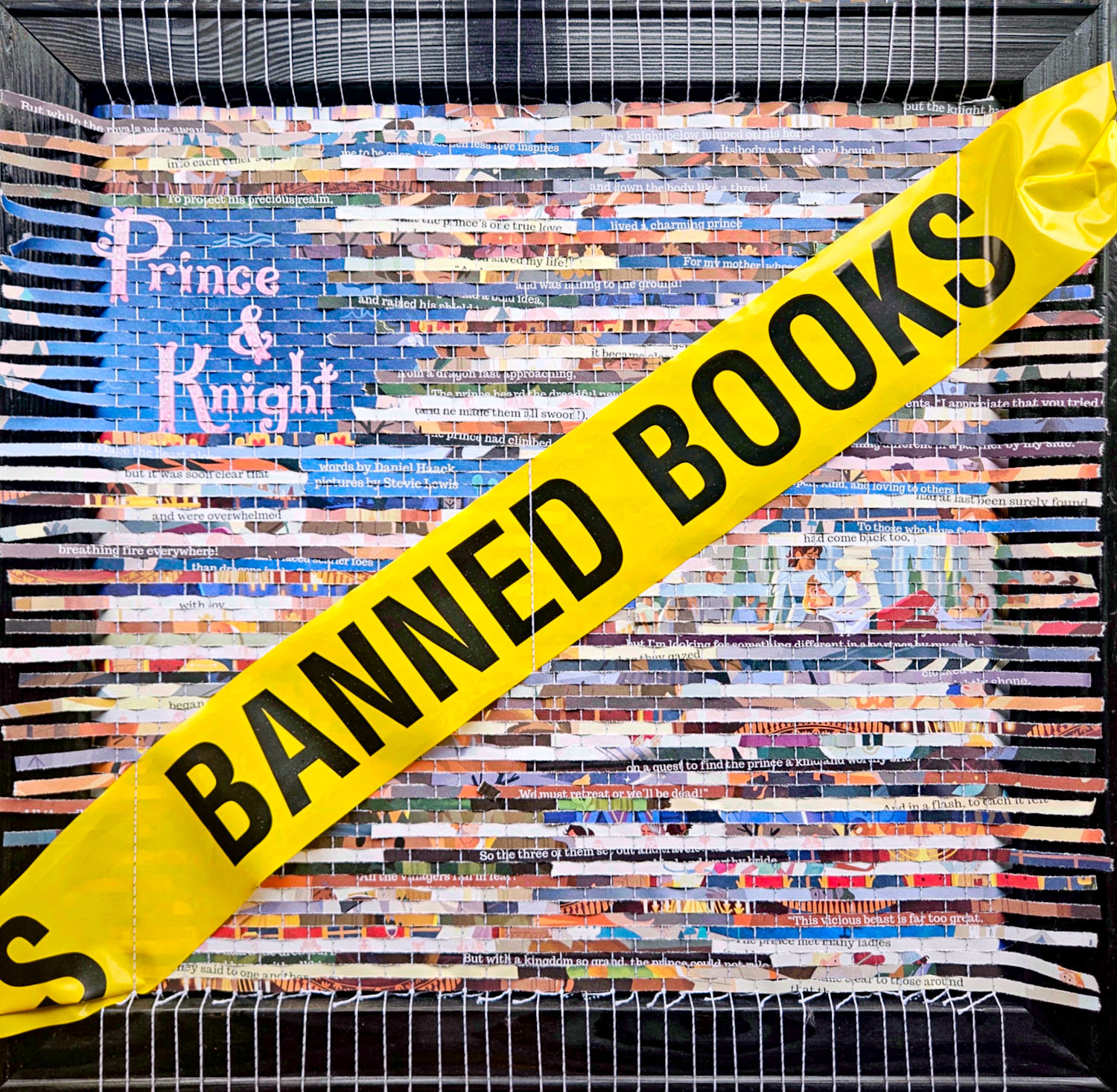
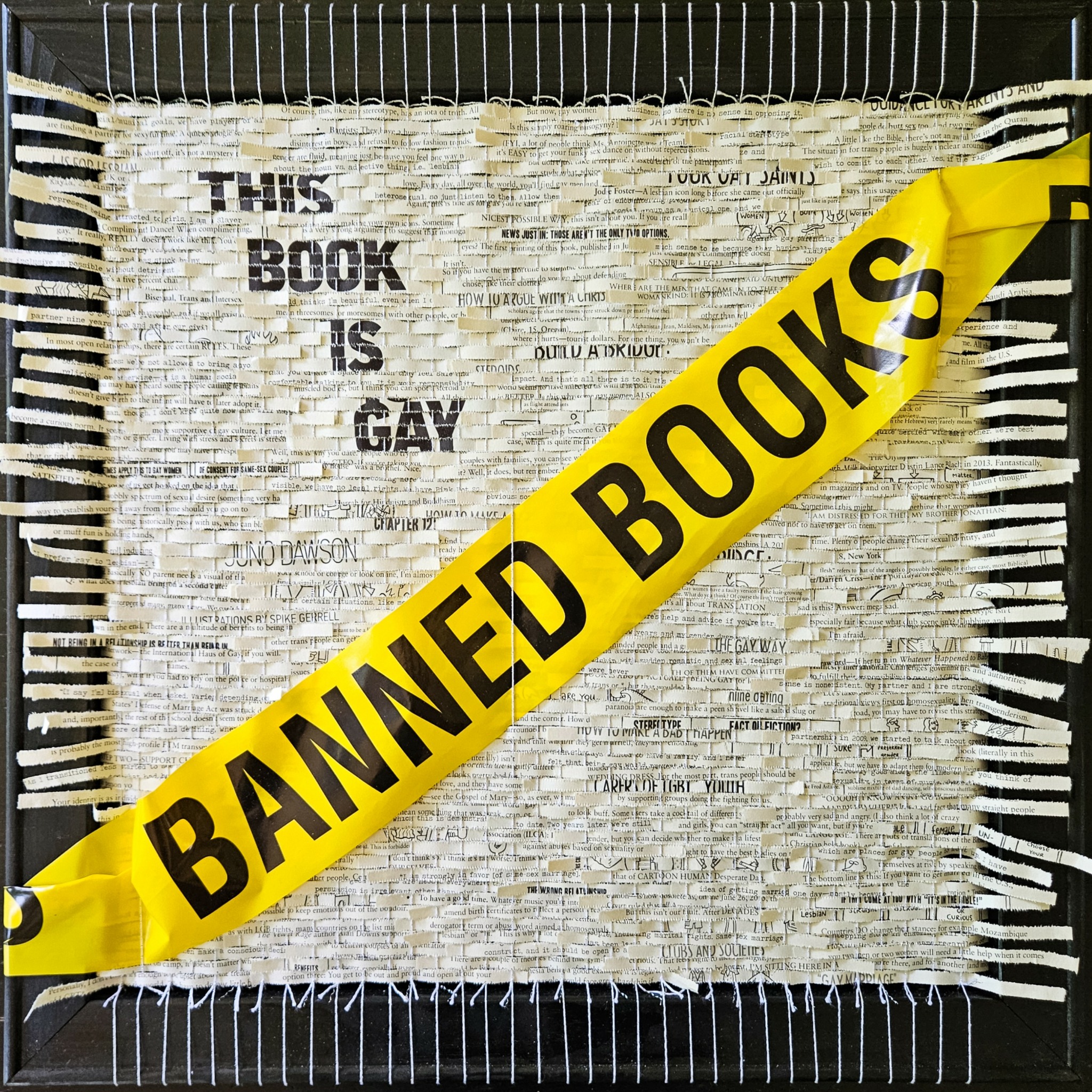
Image Credits
Ellis Angel


